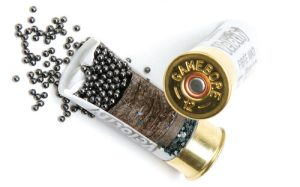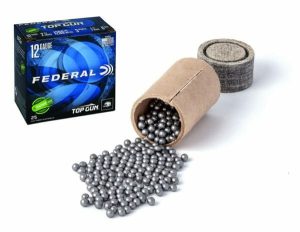Going Green With Fiber Wads for Shotgun Shells
In the sphere of ammunition manufacturing, a compelling shift towards sustainable practices is starting to resonate. The traditional components, specifically the wads used in shotgun shells, are being redefined and replaced with more environmentally friendly alternatives. Among these, fiber wads have emerged as a practical and eco-friendly solution. This article delves into the green shift in the shotgun industry, the rise of fiber wads, their impact compared to traditional wads, and the future of this sustainable innovation.
The Evolution of Shotguns: A Green Shift
In the past, the manufacturing of shotgun shells was not typically linked with sustainability. Traditional wads, which are used to separate the powder and the shot in shotgun shells, were often made from plastic or cardboard, materials that are notorious for their negative environmental impact. However, over the years, increasing awareness about the environmental footprint of these components has led to a green shift in the ammunition industry.
This green shift is not just an environmental necessity, but also a response to changing consumer demands. The new generation of hunters and shooters are more eco-conscious and are seeking ways to minimize their environmental impact. They are closely scrutinizing the materials used in their ammunition and expressing a preference for eco-friendly alternatives.

As a result, manufacturers in the ammunition industry are feeling the pressure to innovate and develop more sustainable solutions. They have to balance the challenge of creating an environmentally friendly product that still delivers the performance that shooters expect. One such innovation that has come to the fore is the use of fiber wads in shotgun shells.
The Rise of Fiber Wads: Eco-friendly Shooting
Fiber wads have emerged as a viable alternative to traditional plastic wads, marking a significant advancement in eco-friendly shooting. Made primarily from pressed fiber, these wads are biodegradable and significantly reduce the environmental footprint of shooting activities.
Not only do they bring an environmental advantage, but fiber wads also perform remarkably well in the field. They provide excellent gas sealing, consistent velocities, and predictable patterns, thereby proving their worth not just in terms of sustainability, but also in performance.
Interestingly, fiber wads are not a new invention. They were used in shotgun shells before plastic became the material of choice. However, their revival in the modern context is due to their eco-friendly properties and the growing demand for sustainable shooting solutions.

The Impact: Fiber Wads Versus Traditional Wads
Comparing fiber wads with traditional wads, the benefits of the former are quite apparent. Traditional plastic wads can take hundreds of years to decompose, leaving a long-lasting impact on the environment. They can also pose a threat to wildlife if ingested.
Fiber wads, on the other hand, are biodegradable and decompose much more rapidly. They can help to significantly reduce the amount of shooting debris left in the environment. Additionally, they pose less of a risk to wildlife, thereby contributing to the preservation of ecosystems.
The use of fiber wads also aligns with the broader societal shift towards sustainability. As more industries aim to reduce their environmental impact, the adoption of fiber wads in the ammunition industry is a step in the right direction.
The Future: Going Green with Fiber Wads
As we look towards the future of the ammunition industry, going green with fiber wads seems not only possible but inevitable. As long as the manufacturers continue to innovate and improve upon the design and performance of fiber wads, we can expect their adoption to increase.
Another crucial aspect of this green future will be the education of shooters and hunters. Highlighting the benefits of fiber wads and promoting their use will be essential in driving their wider acceptance.
The potential for fiber wads to redefine the ammunition industry is immense. With their combination of performance and sustainability, they represent a future where shooting activities can be enjoyed with minimal environmental impact.
# # #


Comments